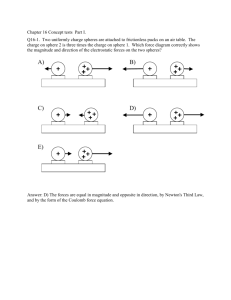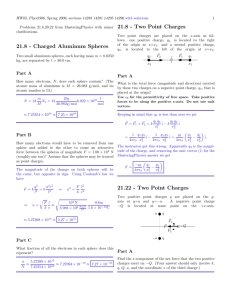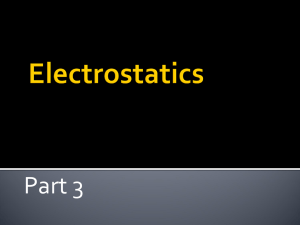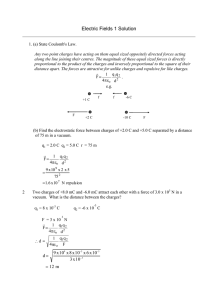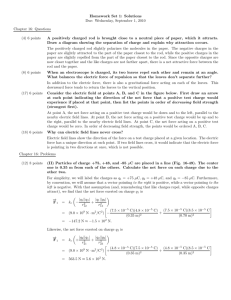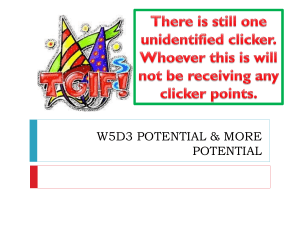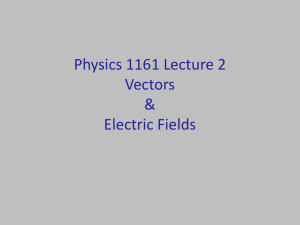ELECTROSTATICS MCQ worksheet
advertisement
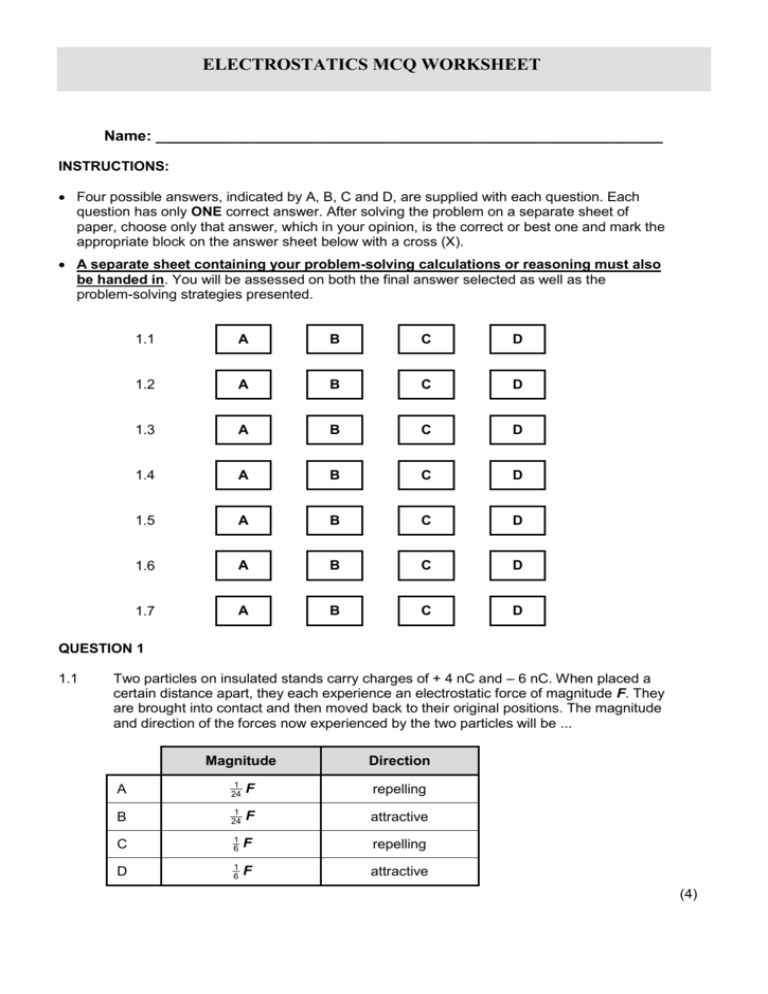
ELECTROSTATICS MCQ WORKSHEET Name: ___________________________________________________________ INSTRUCTIONS: Four possible answers, indicated by A, B, C and D, are supplied with each question. Each question has only ONE correct answer. After solving the problem on a separate sheet of paper, choose only that answer, which in your opinion, is the correct or best one and mark the appropriate block on the answer sheet below with a cross (X). A separate sheet containing your problem-solving calculations or reasoning must also be handed in. You will be assessed on both the final answer selected as well as the problem-solving strategies presented. 1.1 A B C D 1.2 A B C D 1.3 A B C D 1.4 A B C D 1.5 A B C D 1.6 A B C D 1.7 A B C D QUESTION 1 1.1 Two particles on insulated stands carry charges of + 4 nC and – 6 nC. When placed a certain distance apart, they each experience an electrostatic force of magnitude F. They are brought into contact and then moved back to their original positions. The magnitude and direction of the forces now experienced by the two particles will be ... Magnitude Direction A 1 24 F repelling B 1 24 F attractive C 1 6 F repelling D 1 6 F attractive (4) 1.2 Two small identical metal spheres, on insulated stands, carry charges –q and +3q respectively. When the centres of the spheres are separated by a certain distance, the one exerts an electrostatic force of magnitude F on the other. The spheres are now made to touch each other and are then brought back to the same distance as before. What will be the magnitude of the electrostatic force which one sphere now exerts on the other? A B 1.3 ¼F 1 3 F C ½F D 3F (4) Three point charges of magnitude +1 µC, +1 µC and –1 µC respectively are placed on the three corners of an equilateral triangle as shown below. Which vector best represents the direction of the resultant force acting on the –1 µC charge as a result of the forces exerted by the other two charges? (4) 2 1.4 Two identical metal spheres on insulated stands, carrying charges –q and +3q respectively, exert an electrostatic force of magnitude F on each other. The spheres are now brought into contact with each other and are then returned to their original positions. What is the magnitude of the electrostatic force which the two spheres now exert on each other? A 2F B F C ½F D 1.5 1 3 F (4) Three charged objects X, Y and Z on insulated stands, carry charges of –2 nC, +6 nC and 0 nC, as shown below: X is moved and touched on Y. X is then moved and touched on Z. X is finally moved back to its original position. The charges, in nC, on the spheres are now: X Y Z A +2 +4 +2 B 0 +4 0 C +1 +2 +1 D + 4/3 + 4/3 + 4/3 (4) 3 1.6 Three charged spheres, X, Y and Z with charges of +1 nC, – 4 nC and +2 nC respectively, are placed as shown: If the magnitude of the force exerted by Z on Y is F, then the magnitude of the force exerted by X on Y is … 1.7 A F B 2F C 3F D 4F (4) Three point charges, of magnitudes –3 C, +3 C and +2 C, are placed at the three corners of an equilateral triangle as indicated in the diagram. Which one of the following vectors best represents the direction of the resultant force exerted on the +2 C charge by the other two charges? A B C D (4) [TOTAL: 28] 4


